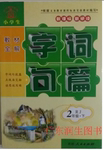题目内容
14."Inspector Sands to the control room,please."If you ever hear that at a British train station,don't panic.But you might appreciate knowing that this is a codeword meant to inform staff that there is an emergency somewhere in the building.The idea is to avoid causing alarm among commuters(通勤者),but still get the message out to those trained to deal with the problem.The subject of secret codewords like this was raised this week on Reddit,and the discussion has attracted thousands of examples.But what codewords and signs are really out there in the wild?
A good place to start is hospital emergency codes.These are often colour-coded,and one health centre in Canada has published its list online."Code red"announces a fire,"code white"indicates a violent person while"code black"means a bomb threat is active.It's been reported that hospital staff sometimes refer to the morgue as"Rose Cottage",in order to avoid upsetting relatives of a patient who has recently died.
"I can see very good reasons for having these codes,"says Paul Baker,a linguist at the University of Lancaster."It may be that people are unsure when they're giving the code so there's no point upsetting members of the public."
Not all codes are alphanumeric(字母数字的).Some are visual,intended to be hidden in plain sight.As BBC Future discovered earlier this year,many banknotes feature a specific pattern of dots placed there to prevent people from photocopying money.Many copiers and scanners are programmed to spot it.
And finally,the spray-painted squiggles(波形曲线) you see on pavements in towns and cities all over the world are codes understood by construction workers and engineers.For example,in UK,different colours are related to different types of cable or pipe.Blue meant a water system while yellow indicated gas lines and green labelled CCTV or data wiring.
All of these codes have a purpose---to avoid causing panic,to transmit subtle signals in social groups,or to provide technical information quickly and easily."People don't like secrets,do they?"says Baker."There is a drive to have as much information as possible---we do live in the information age,"he adds.
32.The following are purposes of the secret codes exceptD.
A.to avoid causing alarm and panic among the public.
B.to send sensitive signals in social groups.
C.to provide technical information quickly and easily.
D.to make people believe you are wiser.
33.The underlined word"morgue"in paragraph 3refers to the room in a hospitalB.
A.where patients are treated
B.where dead bodies are kept
C.where a patient has an operation
D.where a surgeon cuts open the patients'bodies
34.How many kinds of secret codes are mentioned in the passage?B
A.2. B.3. C.4. D.5.
35.Which of the following could be the best title of the passage?A
A.The secret codes you are not meant to know
B.Where to find the codes
C.The origin of different codes
D.Codes in the modern society.
分析 本文属于说明文阅读,作者在这篇文章中主要向我们介绍了三种不同的秘密代码,并通过举例说明人们使用这些秘密代码主要是因为其可以避免引起公众的恐慌和恐慌,在社会群体中发送敏感信号以及快速而容易地提供技术信息.
解答 32.D 细节理解题,根据最后一段All of these codes have a purpose---to avoid causing panic,to transmit subtle signals in social groups,or to provide technical information quickly and easily.可知秘密代码可以避免引起公众的恐慌和恐慌,在社会群体中发送敏感信号,快速而容易地提供技术信息,文章没有提到让人们相信你是明智的,故选D.
33.B 词义猜测题,根据第三段It's been reported that hospital staff sometimes refer to the morgue as"Rose Cottage",in order to avoid upsetting relatives of a patient who has recently died.可知morgue指的是停放死去的亲人尸体的地方,故选B.
34.B 推理判断题,根据第一段 an emergency somewhere in the building第三段A good place to start is hospital emergency codes.倒数第二段codes understood by construction workers and engineers.可知文章中提到了大楼里的急救代码,医院急救代码以及建筑工人和工程师的代码,共三种,故选B.
35.A 主旨大意题,通读全文可知这篇文章主要向我们介绍了秘密代码,以及人们使用秘密代码的原因,故选A.
点评 考查学生的细节理解和推理判断能力.做细节理解题时一定要找到文章中的原句,和题干进行比较,再做出正确选择.在做推理判断题时不要以个人的主观想象代替文章的事实,要根据文章事实进行合乎逻辑的推理判断.

 教材全解字词句篇系列答案
教材全解字词句篇系列答案| A. | an expensive blue cotton | B. | a cotton blue expensive | ||
| C. | a blue expensive cotton | D. | a cotton expensive blue. |
| A. | declining | B. | devoting | C. | shortening | D. | consuming |
| A. | differ | B. | suffer | C. | prevent | D. | recover |
| A. | since | B. | as | C. | when | D. | than |
| A. | fixing on | B. | fixed on | C. | to fix on | D. | having fixed on |
 It is probably the strangest sport anyone has ever invented.And at first sight,it looks like the easiest.Competitors have to do two things.The first is to stand still.The second is to place their hands anywhere on the body of a car,and keep it there.
It is probably the strangest sport anyone has ever invented.And at first sight,it looks like the easiest.Competitors have to do two things.The first is to stand still.The second is to place their hands anywhere on the body of a car,and keep it there.